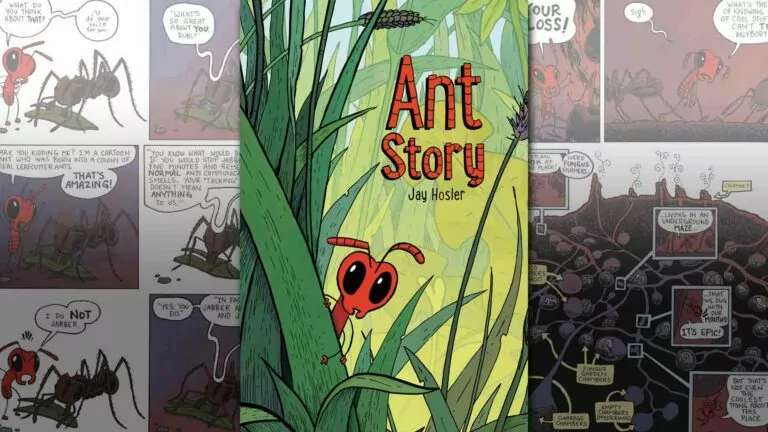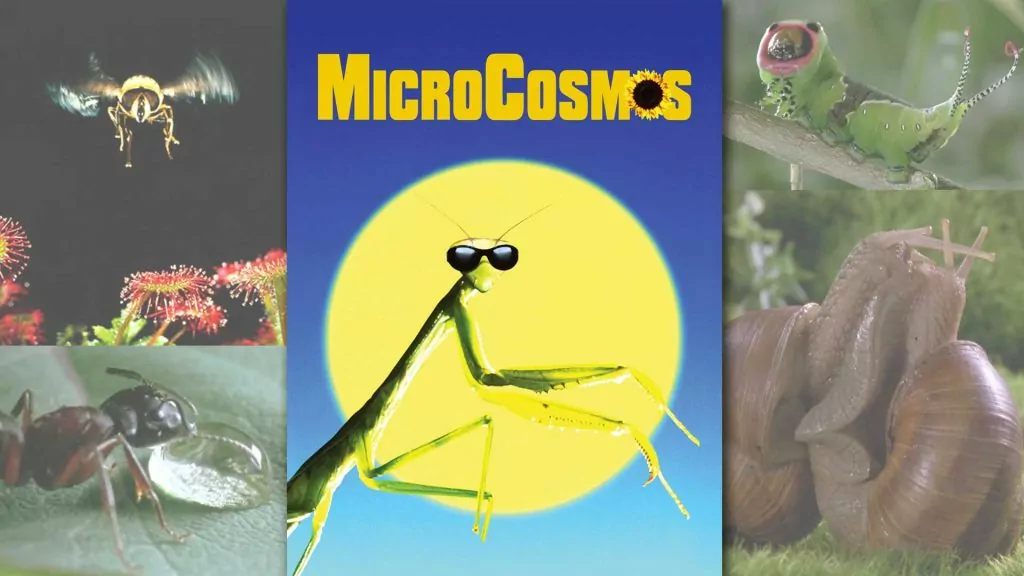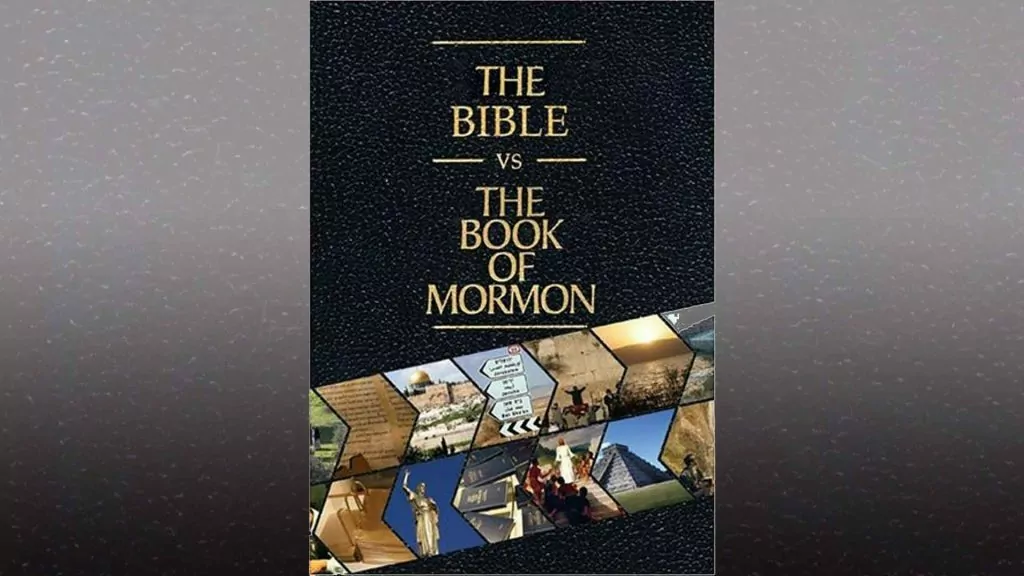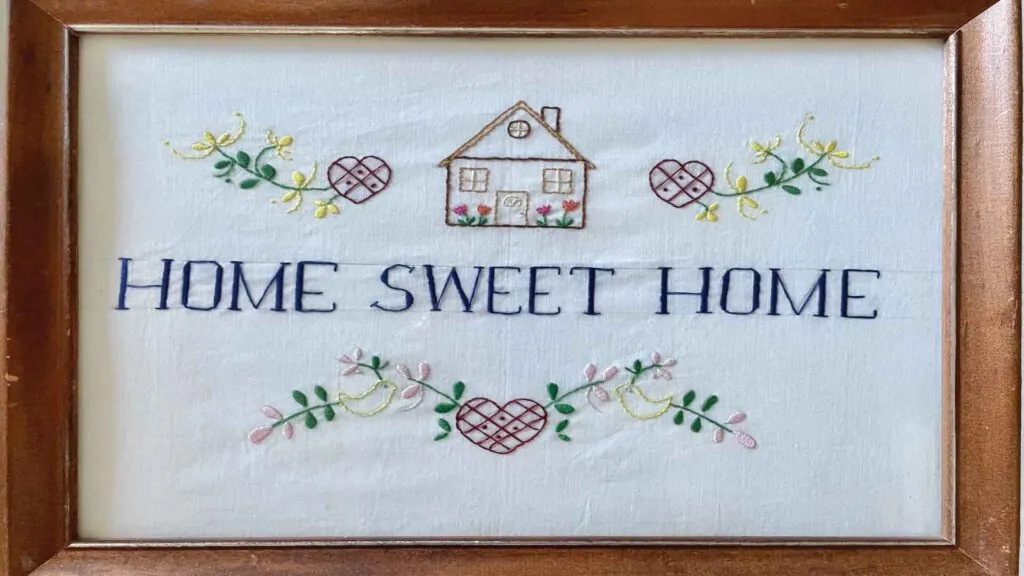by Jay Hosler
2024 / 158 pages
This is as fascinating and creepy a comic about ants as you’re likely to read. Ant Story is narrated by Rubi, an ant different from all the others in the colony in that she can talk. She also differs in that she is drawn rather “cartoony” while they are all quite realistic. It makes for a lonely existence, but being a talking ant means that Rubi can give us quite the inside look at her ant colony.
As Rubi gives us the tour, we learn that there are about a “gajillion” ways for an ant to die, and we’re shown one right off – an ant that Rubi was having a one-sided conversation with is suddenly slurped up by a “death tongue.” Or, as we might describe it, a chameleon ate it.
There is a bit of grim humor throughout, which will likely appeal to boys, with the main example involving Rubi and a friend. When Rubi meets what seems to be another talking ant – the first she’s ever encountered! – she eventually discovers it isn’t actually a talking ant, but is instead a talking parasitic phorid flea (named Miranda) that is growing and developing in the brain of this, now mostly “zombified,” ant! That’s grim, but realistically grim – these critters do exist, and do lay their eggs in ants, for them to grow and eventually burst out of.
But I skipped ahead. Before we discover that Miranda is a phorid, and not just another talking ant, Rubi explains all sorts of ant basics, and we get to learn right along with Miranda. That makes this quite the educational journey.
Cautions
While the science, entertainingly told, is the reason to get this comic, it is that grim reality that makes for some cautions too. The parasitic phorid, and the predators Rubi and Miranda both evade, will raise questions which many younger readers may not know how to deal with, like: “If God created everything good at the start, why are so many predators so seemingly well designed to kill?” This secular book doesn’t offer any answer, but we know it’s due to Man’s Fall into Sin. But to some, particularly this book’s younger target audience, that general answer might not seem to adequately account for the impressive design behind these killing machines. Death via something uncontrolled like a volcanic explosion seems easier to understand. That fits with the brokenness that came with sin – the volcano has broken loose! But precision engineering in murderous parasites is the very opposite of brokenness, so… what’s with that?
Thus this might not be a book for a tween or early teen reader, though it is one that a student in Grade 11 and 12 should certainly be able to contend with before leaving the protective environment of our school. Some answers on this front can be found here:
If your school library doesn’t have any resources addressing the problem of parasites, then it should get something like Answers in Genesis’s The New Answer Book (Vol. 1, 2, and 3).
Another caution concerns Jay Hosler’s previous book about bees, which pushes evolution, and is not worth getting.
Conclusion
This is an absolutely fascinating read that will appeal to many a science-minded student. But the sometimes grim topic matter, and the complex theological issues that are tangentially touched on, mean this is one for high school and up.















